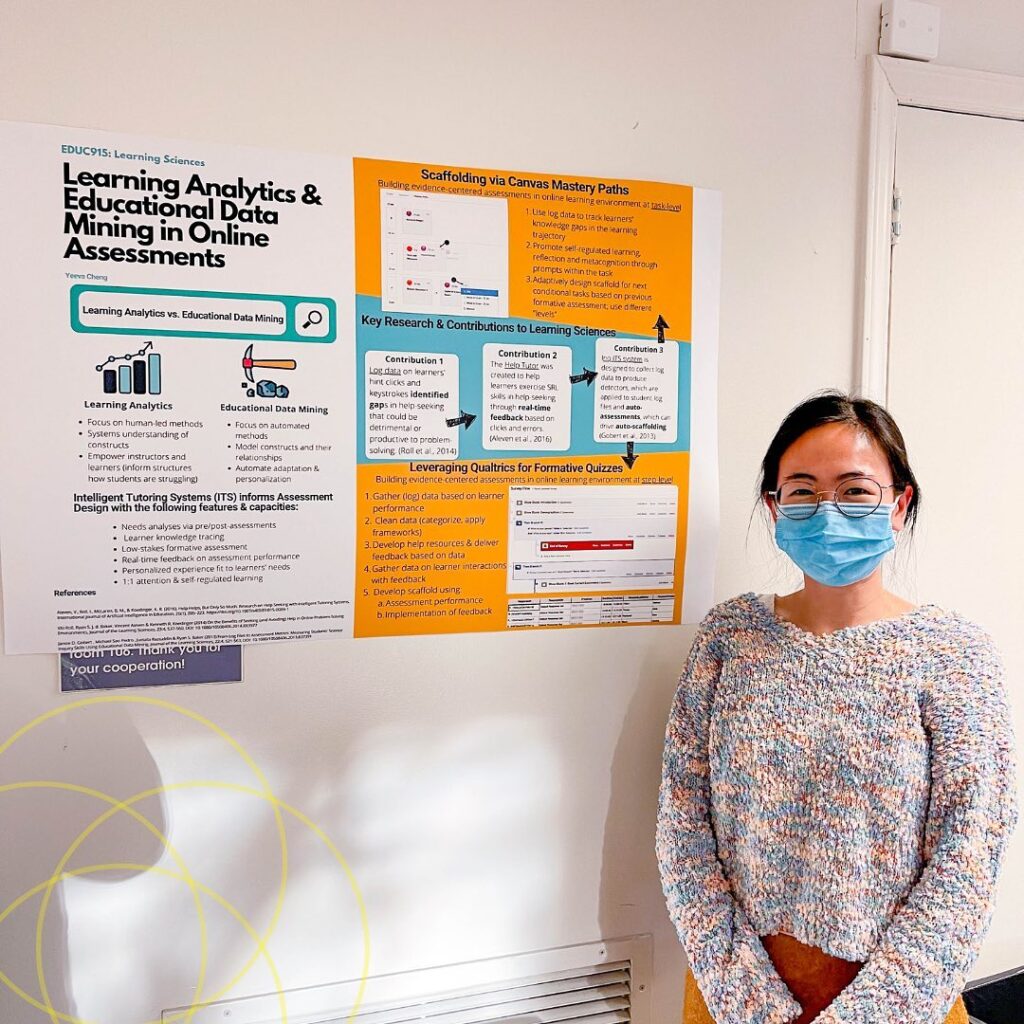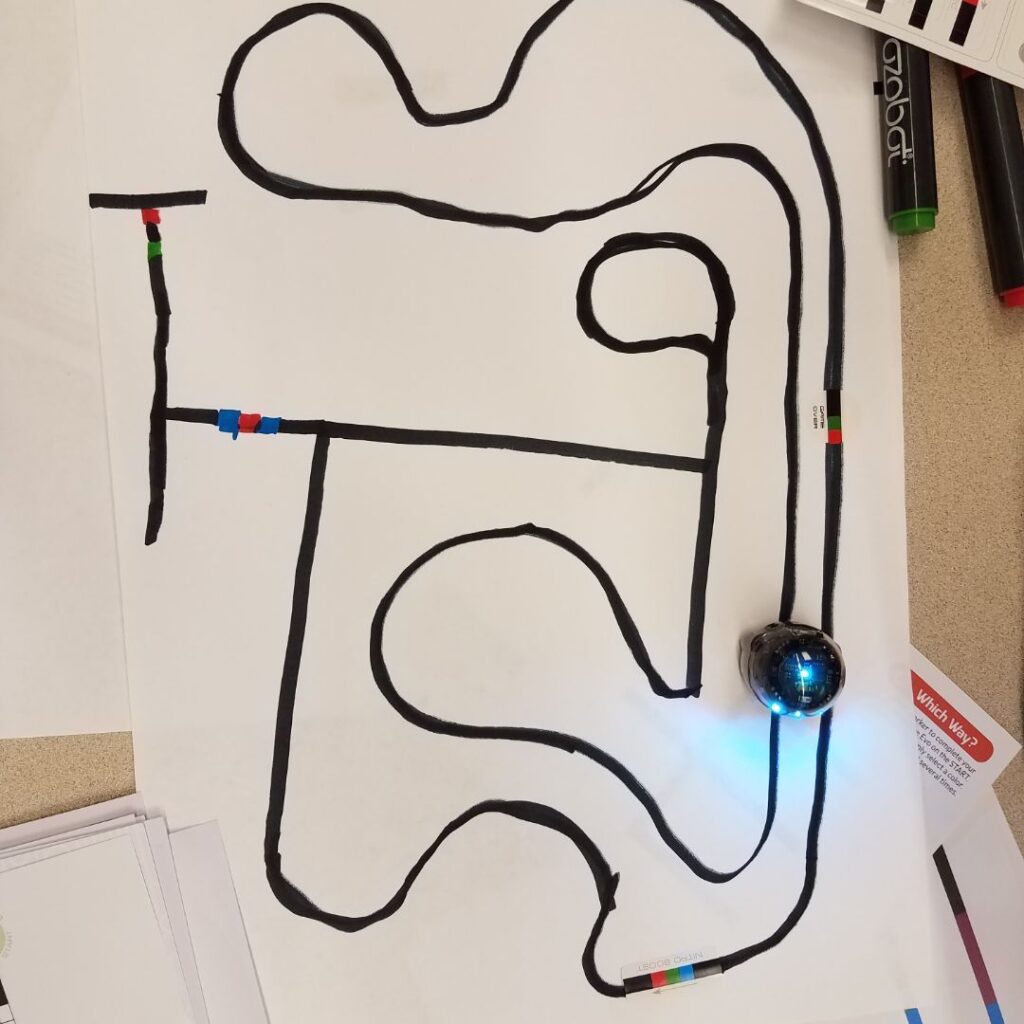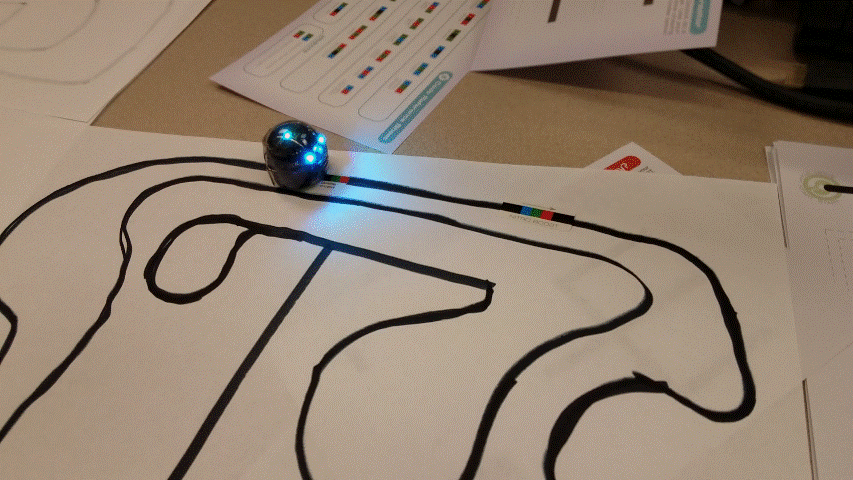While on the Learning Engineer track at UNC’s Master’s in Educational Innovation, Technology and Entrepreneurship program, I spent the last 9 months building my skills in instructional design. My coursework included:
- Adaptive and Personalized Learning
- Learning Sciences
- Instructional Strategies for Online Learning
- Design of Emerging Technologies for Education
- Learning Analytics
- Educational Innovation & Technology
- Intro to Computer Programming in Python

Among some of the learning products I’ve worked on are listed below. You can check out my portfolio to see some of my work!
- A business model canvas to pitch an online international hub including curricula outside the typical K-12 core courses
- A writing workshop leveraging adaptive technology for first-generation college-going students
- A model for a digital storytelling curriculum using learning sciences theory
- 2 videos evaluating, recommending and demonstrating: 1) trace log data infrastructure for CMU’s CS Academy module, and 2) Critical Thinking Points and Self-Regulated Learning Points features to Blackboard’s Discussion Analysis
- A virtual reality prototype to help graduate-level international students from China with question-asking
- An asynchronous module using instructional strategies and hosted in Canvas
Thesis
This summer, I look forward to devoting time to steadily continuing work on my 10-module asynchronous course on Menstrual Hygiene Management Education. I became aware of MHM education through my internship at the GIRL Center, and it was through writing a blog/insights piece on menstrual cups that I began to really feel frustrated by how little space is made for students to learn about menstruation–particularly for the students who experience it first-hand. MHM education has often been addressed under the umbrella of sex and sexuality education, and this varies widely from context to context. And yet, almost universally, to talk about one’s period is often deemed an inappropriate “taking up” of space, if tolerated at all.
Working at the GIRL Center has also been a journey in thinking more inclusively about who identifies as a girl–which is why in my curriculum design, it is important to use the term “menstruator” to be mindful that not all girls menstruate and not all people who menstruate identify as girls.
While EdTech offers a warmer space, the masculinity of the tech world and culture still has its presence. By inserting MHM education in an interactive online format, I look forward to testing the bounds and holding the EdTech world accountable to what it claims to uphold–equity and disruption.

Why MEITE?
As a Davidson grad, community is the biggest draw to a new place or environment for me. MEITE students are some of the most down-to-earth, kind, hopeful people I have met, and it shows in the work they do and the collaborations they offer. MEITE faculty push students to not only be curious, but to materialize those curiosities through construction and creation. Finally, from advising to sharing his partner’s homemade soap to personally reviewing our cover letters if needed to picking students up at the airport, Dr. Cherner directs this program and drives home the message that MEITE is absolutely student-centered and community-centered. Where I had been skeptical about the world of EdTech, MEITE has shown me that where there are faults in the system, there is incredible hope and possibility to do things differently, but from a very familiar place–starting with people first.
